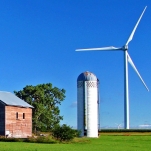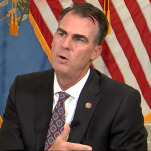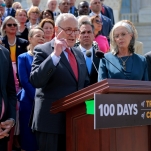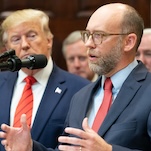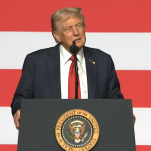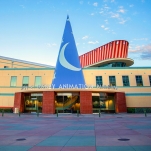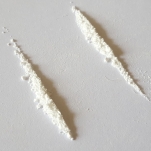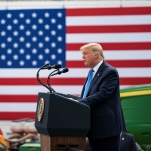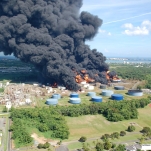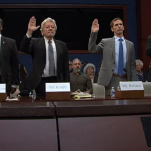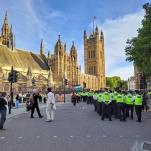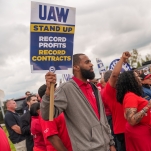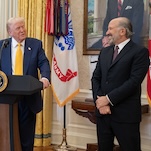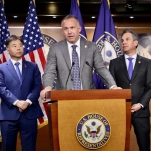Airlines Demonstrate the Benefits and Challenges of Getting to Net Zero
Photo by Tadayuki YOSHIKAWA/Aviation Wire/AFLO/Shutterstock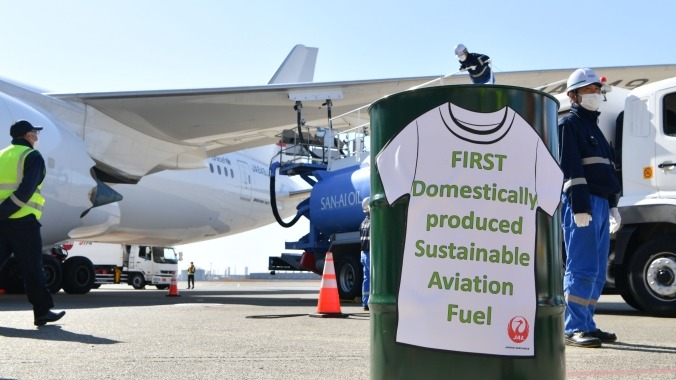
Flying is one of the larger contributors to climate change. The International Energy Agency estimated it comprised two percent of all global carbon emissions in 2022, and the sector’s greenhouse gas output has grown faster in recent decades than rail, road or shipping. The United Nations warned that airplane emissions will triple by 2050, and the industry is under pressure to reduce its carbon footprint; according to the IEA, it is currently far behind schedule.
Sustainable aviation fuel (SAF) is basically the airline industry’s entire bet on reducing carbon output and getting to net zero emissions by 2050. Emissions from jet fuel comprise nearly all of the industry’s direct emissions, and SAF is attractive in that it is a direct replacement for jet fuel. Planes do not need to be outfitted with new technology to accommodate SAF, and because of this ease of transition, it has become both the industry’s and the Biden Administration’s primary hope to decarbonize air travel.
There are a lot of big promises being made around this newer source of energy. The United States Department of Energy believes SAF can eventually reduce greenhouse gas emissions by ninety-four percent and Airbus claims SAF can currently reduce emissions compared to jet fuel by eighty percent. Twelve, an SAF producer, asserts that their fuel can lower emissions by ninety percent versus jet fuel.
There is no one kind of SAF. There are many different methods to make biofuel that can replace jet fuel, and not all of them are sustainable. In fact, there is plenty of evidence that ethanol and vegetable oils actually increase net emissions versus jet fuel, and the Biden administration greenlighting a tax credit supported by the ethanol industry is likely counterproductive to their stated goals of getting to net zero by 2050.
Additionally, it takes a lot of land to grow all these crops, and many scientists believe that scaling this technology could take up so much farmland that it winds up increasing food prices while ratcheting up emissions through deforestation and excess water usage, as the International Council on Clean Transportation (ICCT) explained:
Increased demand for biofuels made from crops grown on dedicated cropland, such as wheat or palm, may displace commodity use for food and feed and increase the total agricultural area needed to meet demand. The conversion of high carbon-stock forests, natural lands, and pastures to agriculture to meet increased demand would release carbon from disturbed biomass and soil and thereby would generate indirect emissions attributable to those biofuels.
The World Resources Institute estimates for the United States to reach its SAF target just with ethanol, it would require 114 million acres of corn to be planted—an area larger than the size of California. What a lot of these analyses centered around that eighty percent figure miss is that just measuring SAF emissions versus jet fuel in planes does not come close to telling the entire SAF story. There are a lot of second- and third-order effects of producing certain kinds of SAF which can dramatically increase emissions.
This complexity around SAF’s second- and third- order effects can generally be boiled down to a basic dynamic that ICCT detailed: “it is evident that oilseeds may have [indirect land-use change] emissions that increase their emissions above the petroleum baseline, whereas starch and sugar crops have lower [indirect land-use change] emissions.”
SAF Is a Good Investment: A Delta Case Study
Even though SAF is still very much a work in progress and there is no standardized version, the economics around it make sense as a replacement for jet fuel. I took a sustainable finance class in my master’s program, and what I learned doing my final project on Delta’s SAF goals blew me away. We often hear about the immense up-front costs of decarbonization programs, and this is no different, but even factoring in the gargantuan price tag, this still would add economic value to Delta in the next ten years.
Finding exact figures for the investment needed to meet Delta’s fuel demand was tricky, but I found a good proxy in the Finnish sustainable energy giant Neste, who Delta has an agreement to purchase SAF from. Neste opened a plant in 2022 that cost $2 billion to construct and is supposed to yield roughly 430 million gallons of SAF per year.
-

-

-

-

-

-

-

-

-

-

-

-

-

-

-

-

-

-

-

-

-

-

-

-

-

-

-

-

-

-

-

-

-

-

-

-

-

-

-

-

-

-

-

-

-

-

-

-

-

-

-

-

-

-

-

-

-

-

-

-

-

-

-

-

-

-

-

-

-

-

-

-

-

-

-

-

-

-

-

-

-

-

-

-

-

-

-

-

-

-

-

-

-

-

-

-

-

-

-

-

-

-

-

-

-

-

-

-



